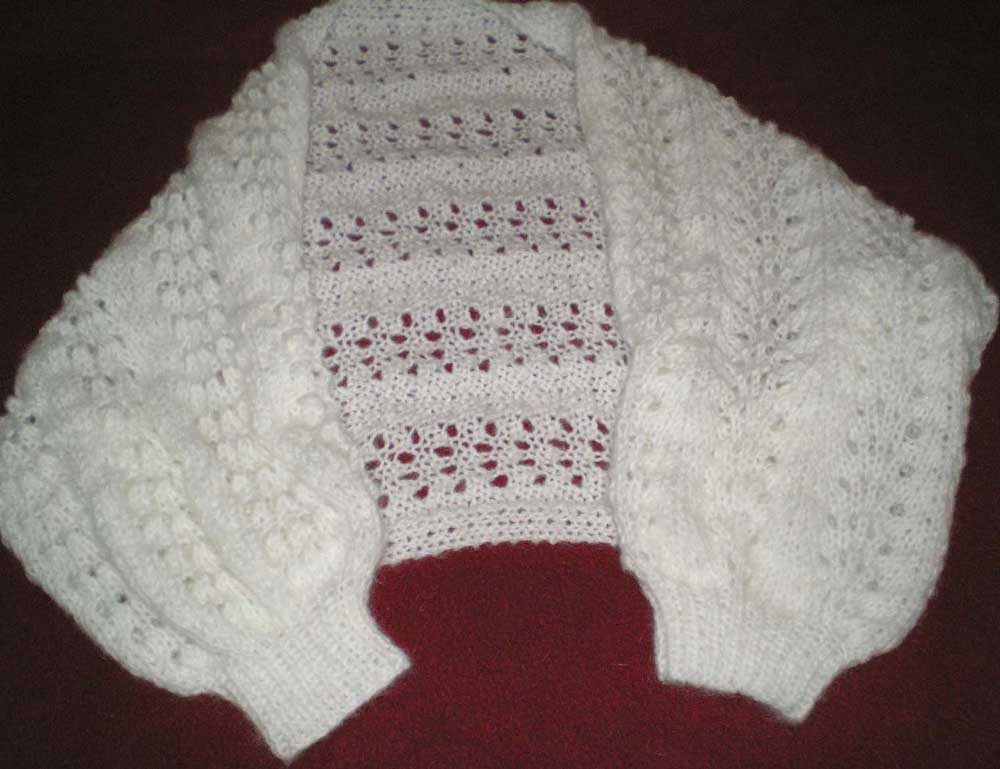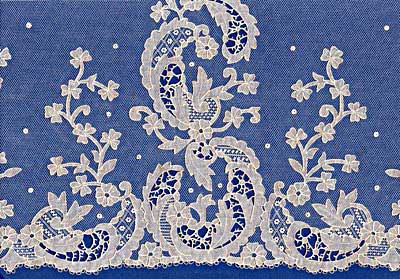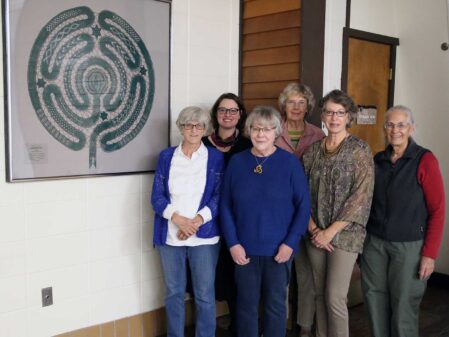The Big Sky Lace Guild was started in the fall of 2014 and is the only lace guild currently in Montana. The last lace guild in Montana existed in the early 1900s. Although based in Butte, the Big Sky Lace Guild is open to lace-makers statewide. The Guild became a charter member of the International Organization of Lace, Inc. in 2015.
The organization was formed for educational, non-profit purposes, to promote interest and appreciation for lace and lacemaking, including:
- sharing information on the history, collection, and preservation of lace
- developing lacemaking skills through instruction and demonstrations, and
- furthering the aims of the International Organization of Lace, Inc.
Members of the Guild meet weekly to work on current projects and learn from each other. They also demonstrate at craft shows and farmers’ markets, teach classes and work on large projects like the Labyrinth, which hangs at Montana Tech. The Guild holds a workshop once a year to learn new techniques and types of lace.
Folklife Area demonstrators are Susan Smith, Toni Seccomb, and Una Schlaebitz, who are demonstrating bobbin lace, and Julie Crowley, who is demonstrating Irish crochet lace.
Labyrinth photo: The labyrinth is made with Milanese-style bobbin lace. It took over 10 months to complete. It was designed and made by the Big Sky Lace Guild in 2019 and 2021 for display at Montana Technical University.
Lace Making
Though lace was in use in the 14th and 15th centuries, including by clergy of the early Catholic Church as part of vestments in religious ceremonies, lace-making became popular in the 16th century in Europe. Because the royalty wore beautiful garments with lace, lace-making was a thriving business. European immigrants to North America brought their lace-making traditions with them. There are several types of lace, and lace-making traditions varied by country and region.
Bobbin Lace
Bobbin lace, also known as pillow lace, is a method of making lace by weaving threads held on bobbins and pinning them on top of a pattern pinned to a pillow. To begin bobbin lace-making you need a pillow, bobbins, straight pins, thread, and a pattern. In the 15th century, braid-making in Genoa, Italy, was a famous decorative skill, and bobbin lace evolved from this technique. A will written in 1493 mentions lace made with bobbins. It spread across Europe and eventually to the whole world.

Knitted Lace
Knitting is a technique of producing fabric from a strand of yarn or wool. Unlike weaving, knitting does not require a loom or other large equipment, making it a valuable technique for nomadic and non-agrarian peoples.
The oldest knitted artifacts are socks from Egypt, dating from the 11th century. They are a very fine gauge, done with complex colorwork, and some have a short row heel, which necessitates the purl stitch. These complexities suggest that knitting is even older than the archeological record can prove. Most histories of knitting place its origin somewhere in the Middle East, and from there it spread to Europe by Mediterranean trade routes and later to the Americas with European colonization. Early knitted lace developed in Europe in the 18th century with Orenburg from Russia, Estonian, and Shetland from the Shetland Isles.

Crocheted Lace
Crochet began turning up in Europe in the early 1800s and was given a tremendous boost by Eleonore Riego de la Branchardiere, who was best known for her ability to take an old-style needle and bobbin lace designs and turn them into crochet patterns that could easily be duplicated. She published many pattern books so that millions of women could begin to copy her designs. Mlle. Riego also claimed to have invented “lace-like” crochet, today called Irish crochet.

Irish Crochet Lace
Irish crochet is a lace-making technique that is also freeform crochet. It started as a way to easily produce lace that resembled the much-sought-after (and expensive) Venetian lace. It became popular after Queen Victoria became interested in it. Lace-making was an important source of income for Irish women.
Irish crochet helped the people of Ireland during the potato famine. The nuns in Cork had developed the art of lace-making with crochet, knitting, and tatting. They sold their beautiful laces and used the money to support the poor.

Tatted Lace
Tatting is a technique for handcrafting a particularly durable lace from a series of knots and loops. Tatting may have developed from netting and decorative ropework as sailors and fishermen would put together motifs for girlfriends and wives at home. All these cords were handed down to weavers who used a finer thread to make lace. The shuttle was smaller to accommodate this finer thread and the lace they made was sewn onto satin and velvet. Irish immigrants came to America wearing tatting, which they sold to make pin money.


